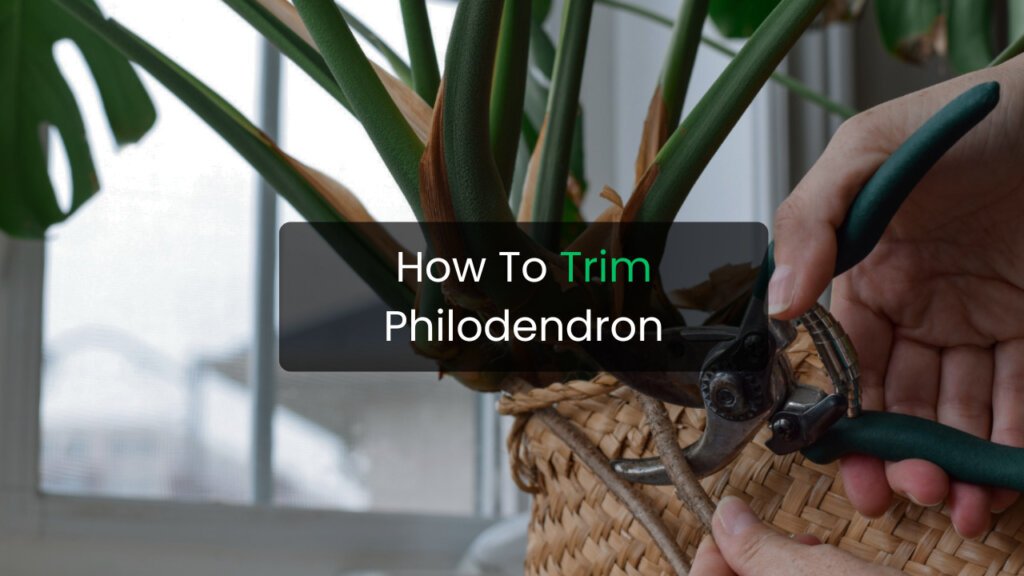Philodendrons are loved for their lush green leaves and fast growing vines. To keep them looking full and healthy, trimming is an important part of their care. Pruning helps control size, encourages new growth, and removes dead or yellow leaves that may affect plant health.
Whether you grow a climbing philodendron or a trailing variety, regular trimming keeps your plant strong, attractive, and thriving indoors.
Why Trimming Matters
Pruning helps your philodendron by:
- Encouraging bushier growth and new leaves
- Preventing the plant from looking leggy or messy
- Controlling vines and plant shape
- Removing damaged or yellow leaves to improve overall health
- Boosting airflow around stems and foliage
Healthy pruning helps the plant send energy to new shoots and strong nodes, improving long term growth.
Step by Step Guide to Trim a Philodendron
1. Gather the Right Tools
Use clean, sharp pruning shears or scissors. Cleaning tools with rubbing alcohol prevents disease spread between stems. A pair of gloves can protect your hands from sap.
2. Identify Stems to Cut
Look for:
- Yellow, brown, or wilted leaves
- Thin or weak vines
- Overgrown stems stretching too long
- Leaves that face downward or grow unevenly
Focus on trimming just above a node, which is where aerial roots and new shoots appear. This encourages new branches to grow from that point.
3. Make Clean Cuts
Cut stems at a slight angle above a leaf node. Avoid tearing or crushing the stems, as this can cause damage and slow recovery.
Remove any dry or damaged leaves by cutting close to the main stem.
4. Shape the Plant
Decide whether you want a fuller, bushier plant or long trailing vines. For a bushy look, trim long vines regularly near the top. For trailing philodendrons, keep length but remove unhealthy growth.
If your philodendron climbs, consider training it on a moss pole or support and trim wandering stems.
5. Do Not Over Trim
Remove no more than one third of the plant at a time. Over pruning can shock the plant and slow growth.
Aftercare Tips
- Place the plant in bright indirect light
- Keep soil slightly moist but not soggy after pruning
- Avoid fertilizing immediately after trimming
- Maintain good humidity around the plant
With proper care, new growth usually appears within a few weeks.
Common Mistakes to Avoid
- Using dirty cutting tools
- Cutting below nodes
- Removing too many leaves at once
- Trimming during plant stress or extremely cold weather
- Ignoring yellow or dying leaves for too long
FAQs
How often should I trim my philodendron
Trim your philodendron every few months or when it looks leggy or overgrown. Light pruning as needed helps it stay full and healthy.
Can I propagate the cuttings
Yes. Philodendron cuttings root easily in water or soil. Make sure the cutting has at least one node.
What is the best time to trim a philodendron
Trim during active growing seasons like spring and summer for best results.
Why do my philodendron leaves turn yellow
Yellow leaves may be caused by overwatering, poor drainage, lack of light, or natural leaf aging. Remove yellow leaves during pruning.
Can trimming harm the plant
When done correctly, trimming improves the plant’s health and appearance. Avoid over trimming to prevent stress.





